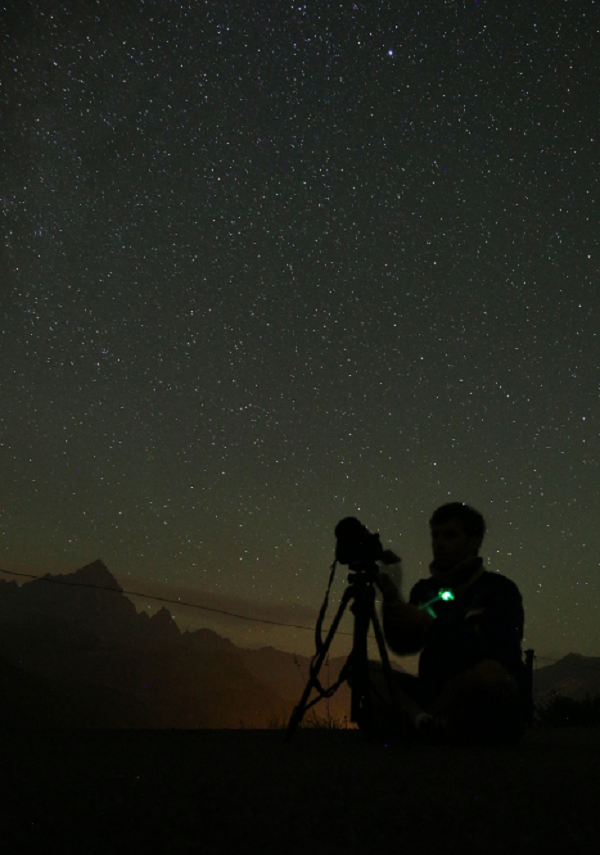Eclipses, Meteor Showers: 2021 Sky Events To Look Forward To
KEY POINTS
- Just like in 2020, there will be many exciting sky events in 2021
- The year of sky events will start with the Quadrantid meteor shower on Jan. 2
- December total solar eclipse will also take place this year
The year 2020 was rife with stunning sky events, and so is 2021. Below are some of the events that skywatchers might be excited about.
Just days after the new year arrives, the Quadrantid meteor shower will grace the skies from the evening of Jan. 2 to the morning of Jan. 3. As SeaSky explained, this meteor shower, which is believed to have come from the extinct comet known as 2003 EH1, is expected to display up to 40 meteors per hour. On the 24th of the month, Mercury will reach its Greatest Eastern Elongation, which means that it will be at its highest point over the horizon, making it the best time to spot Mercury in the sky after sunset.
Although not exactly a sky event, February will bring the highly anticipated landing of NASA's Mars Perseverance Rover on the Martian Jezero Crater on Feb. 18, as per Go Astronomy.
On March 6, Mercury will once again make an excellent appearance, but this time in the morning sky as it reaches its Greatest Western Elongation. Those who would like to catch a glimpse of it should wake up early because it will be best seen in the eastern sky before sunrise, SeaSky noted.
On March 20, it will be Venus' turn to have its best appearance in the morning sky as it reaches its Greatest Western Elongation. It will happen on the same day of the March Equinox when the sun will shine directly at the equator, bringing nearly equal amounts of day and night across the globe.
Although major sky events will come later on in April, it will still bring a meteor shower and a Supermoon, the first being the Lyrids meteor shower on April 22 to 23, followed by the Supermoon on the 27th.

Just days after the Supermoon, on May 6 and 7, the Eta Aquarid Meteor shower will grace the May skies. On May 26, there will be a total lunar eclipse that will be visible in parts of the Pacific Ocean, Asia, Australia, and western North America. On that evening, the moon will appear darker and have an eerie reddish shade.
June will also bring an eclipse, but this time it will be an annular solar eclipse that SeaSky reports will be visible on June 10 in "extreme eastern Russia," western Greenland, Canada, and the Arctic Ocean. The June solstice will then arrive on June 21, marking the first day of summer in the Northern Hemisphere and the first day of winter in the Southern Hemisphere. Just days later, on June 24th, the third and last Supermoon of the year will be visible.
The Delta Aquarids Meteor Shower will peak on July 28 to 29, and at the end of the month, the Juno probe is expected to make its "death dive" to Jupiter, according to Go Astronomy.
On Aug. 2, Saturn will be at its opposition, making it the brightest in the entire year. The month of August will also bring the famous Perseid meteor shower on Aug. 12 and 13, as well as the Blue Moon.
Neptune will be the one reaching its opposition in September, so it will be at its closest and brightest on the 14th, while October will bring two meteor showers -- the Draconids on the 7th and the Orionids on the 21st and 22nd. So far, the end of October is also when the much-awaited James Webb Space Telescope is scheduled to launch.
November will bring the Taurids meteor shower on Nov. 4 and 5 while the Leonids will peak on Nov. 17 and 18. Between these two meteor showers, Uranus will reach its Opposition on Nov. 5, which will be the best time to view it. Later in the month on Nov. 19, there will also be a partial lunar eclipse that will be visible in multiple parts of the world including eastern Russia, the Pacific Ocean, Japan, and Mexico.
December will bring a total solar eclipse, this time on the 4th of the month. Just like the December 2020 total solar eclipse, it will also be visible in South America, NASA said in a fact sheet.
On the 13th and 14th of the month, what is considered by many to be the best meteor shower, the Geminids, will reach its peak. Later in the month, there will be another meteor shower, the Ursids on Dec. 21 and 22. Although it is considered a minor meteor shower, it would still be a great way to end the year of skywatching.
© Copyright IBTimes 2025. All rights reserved.






















